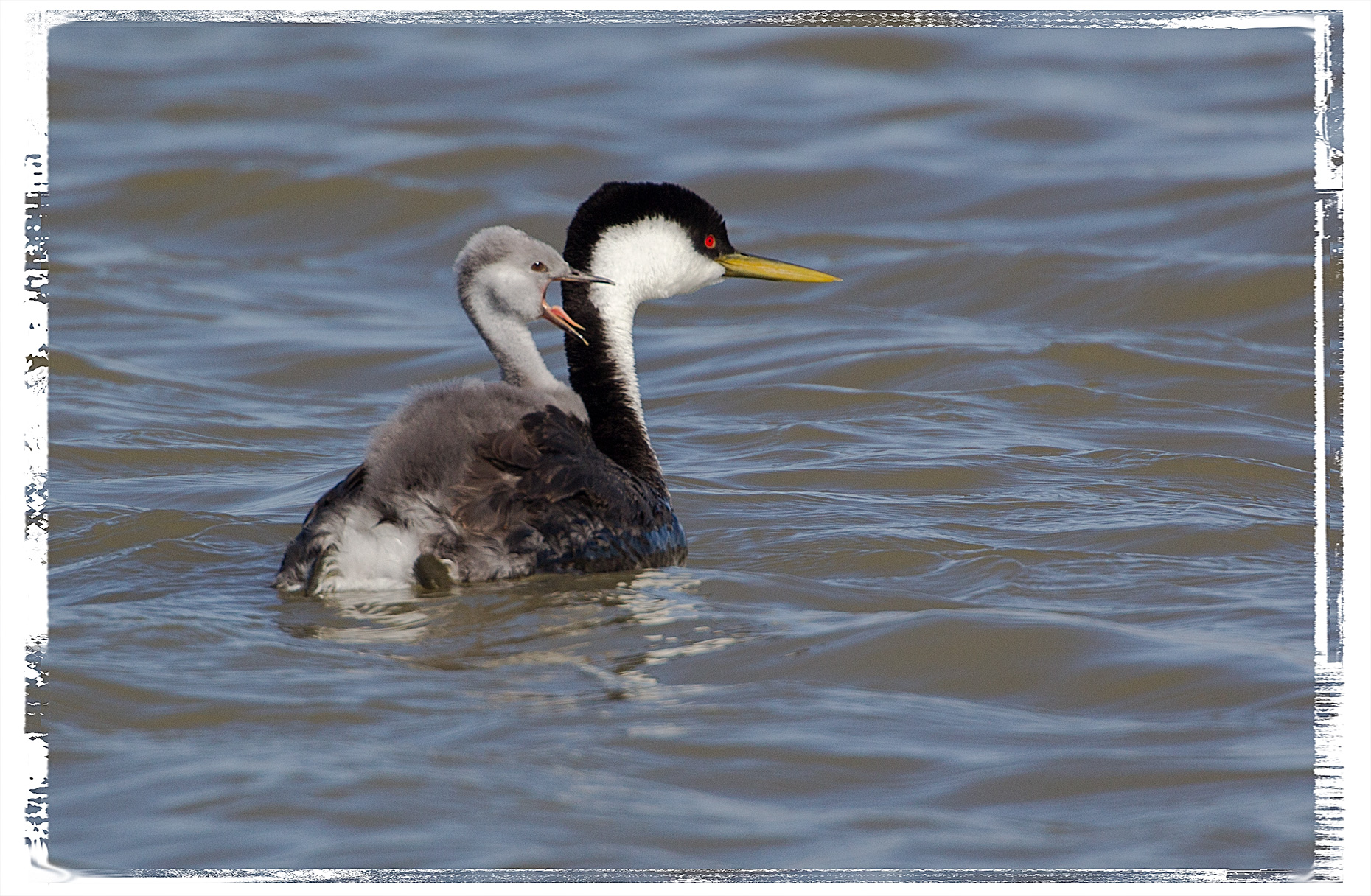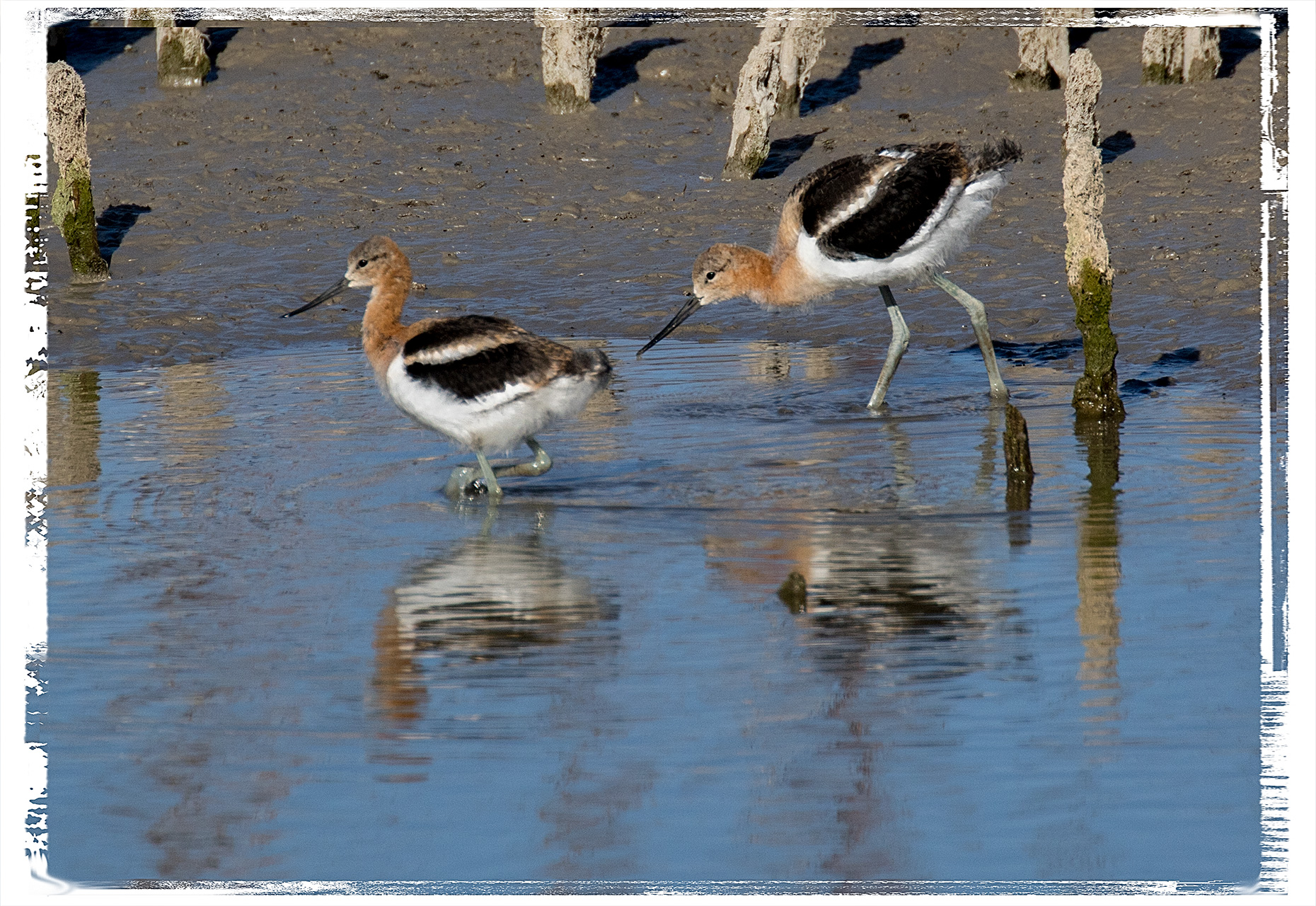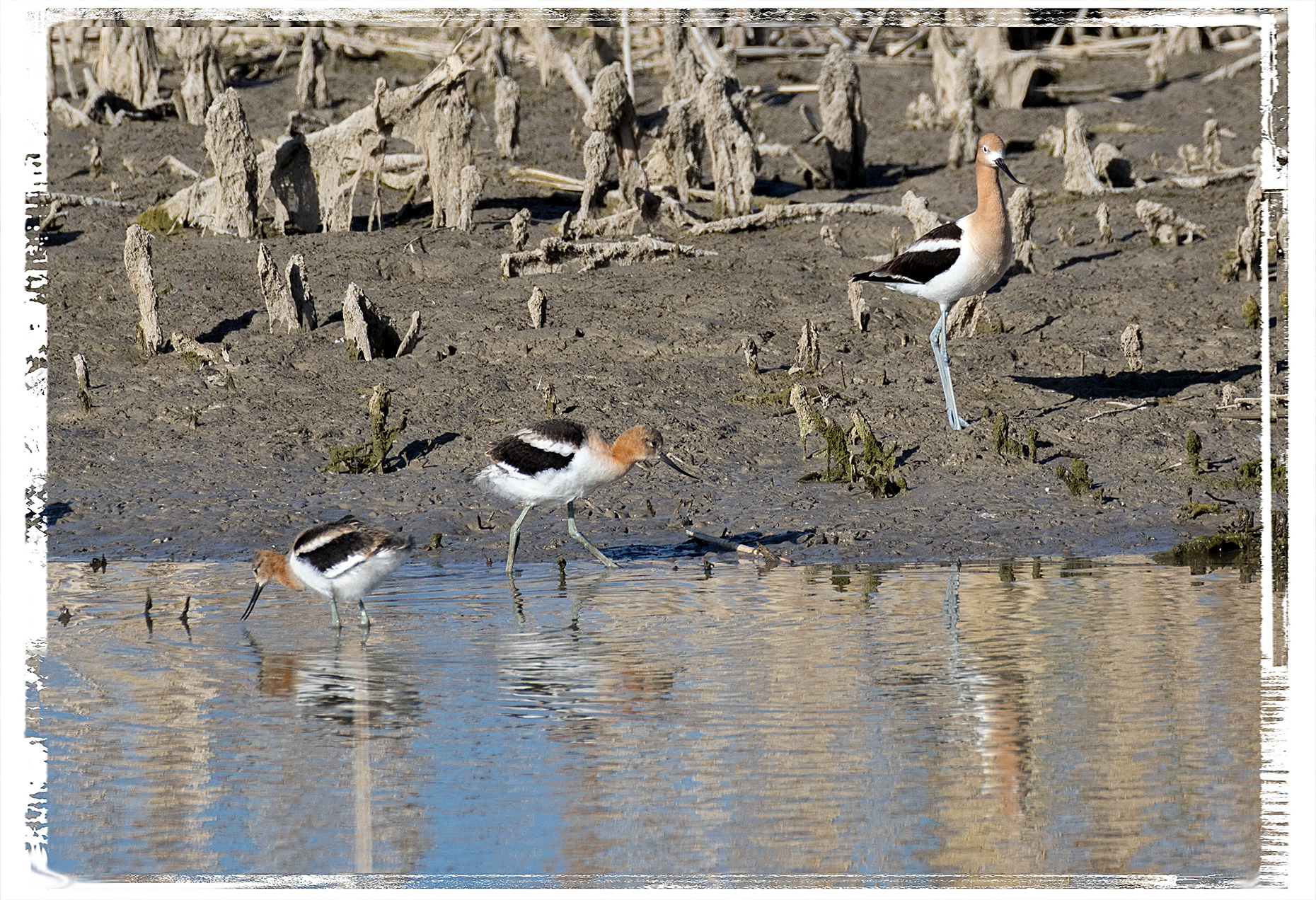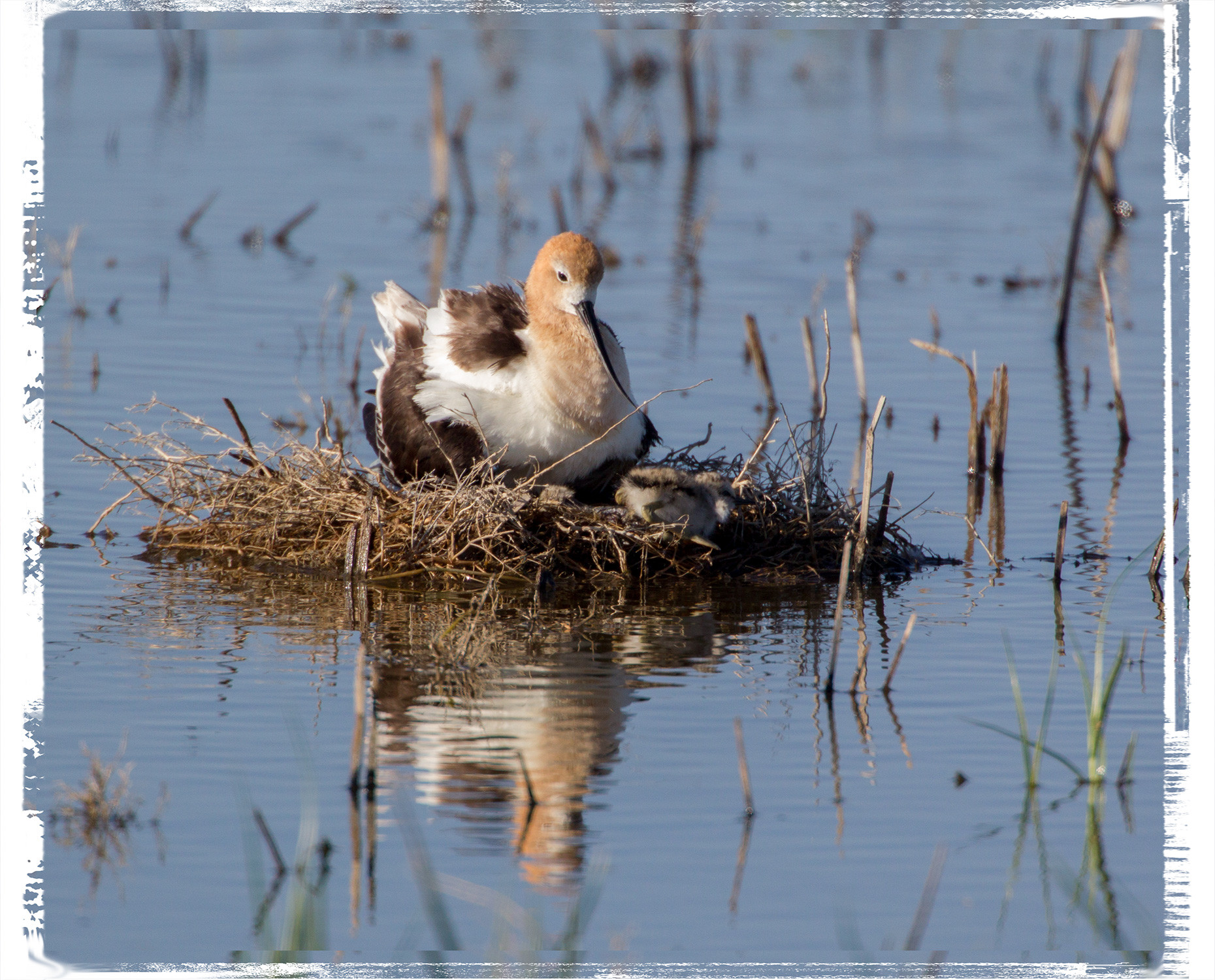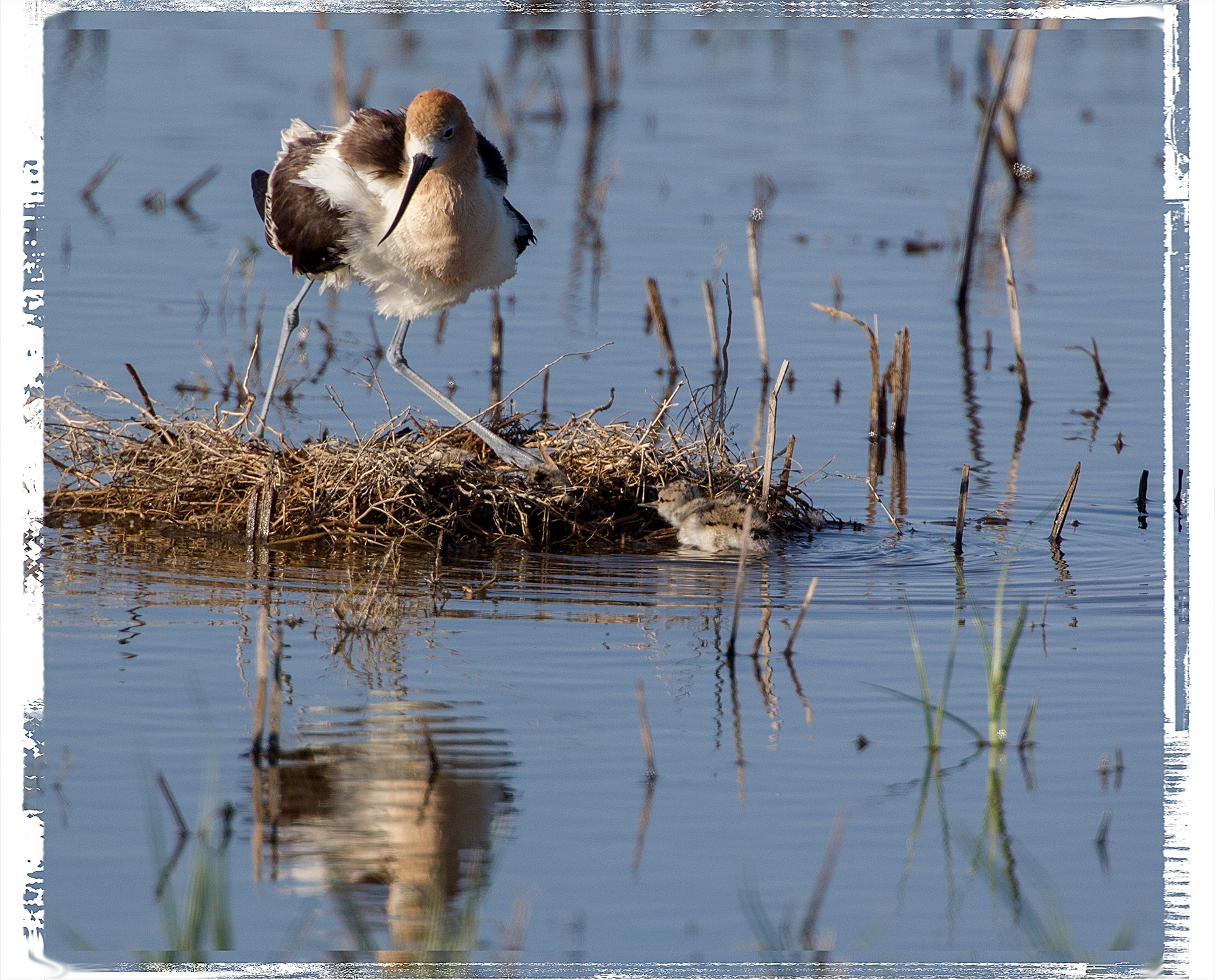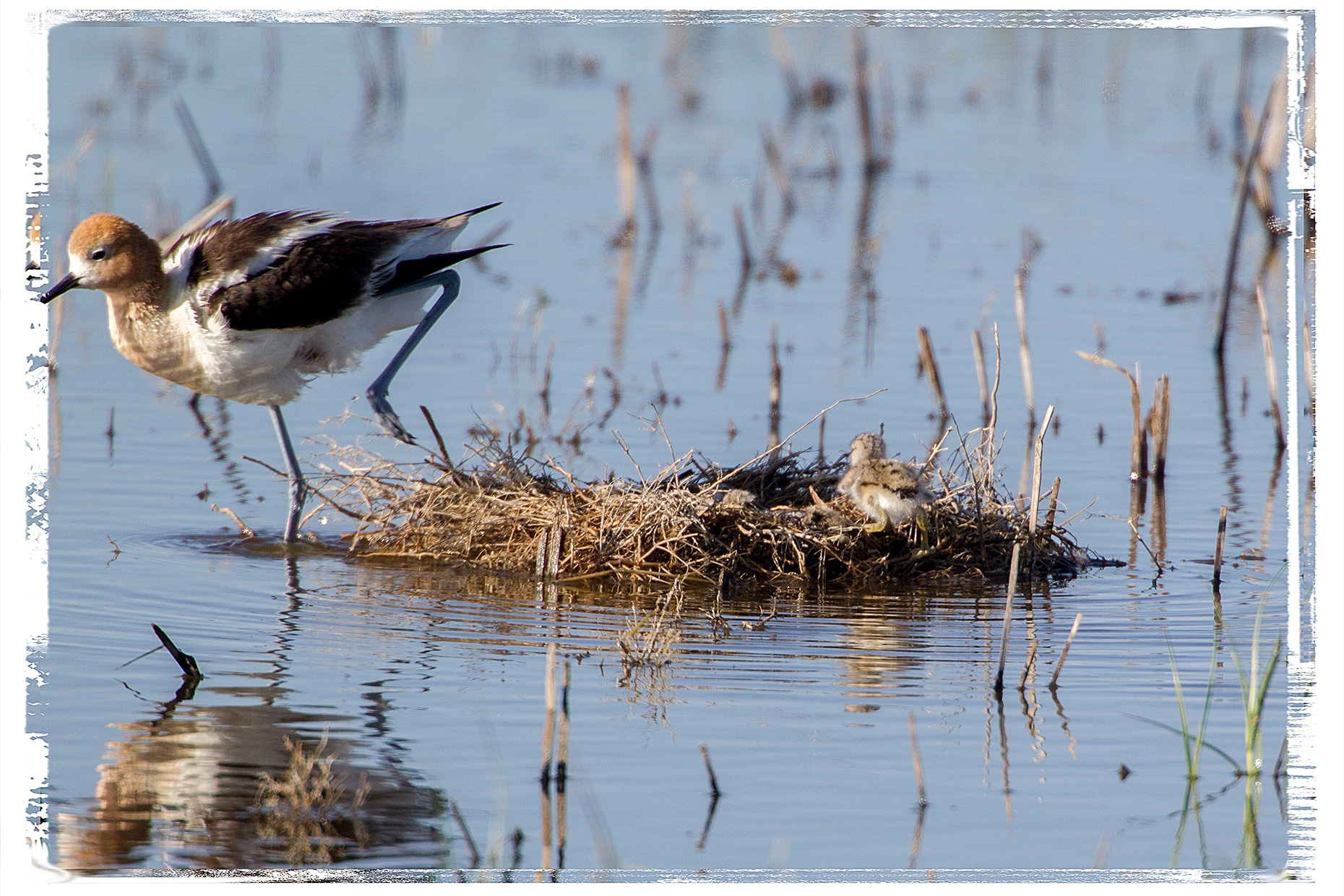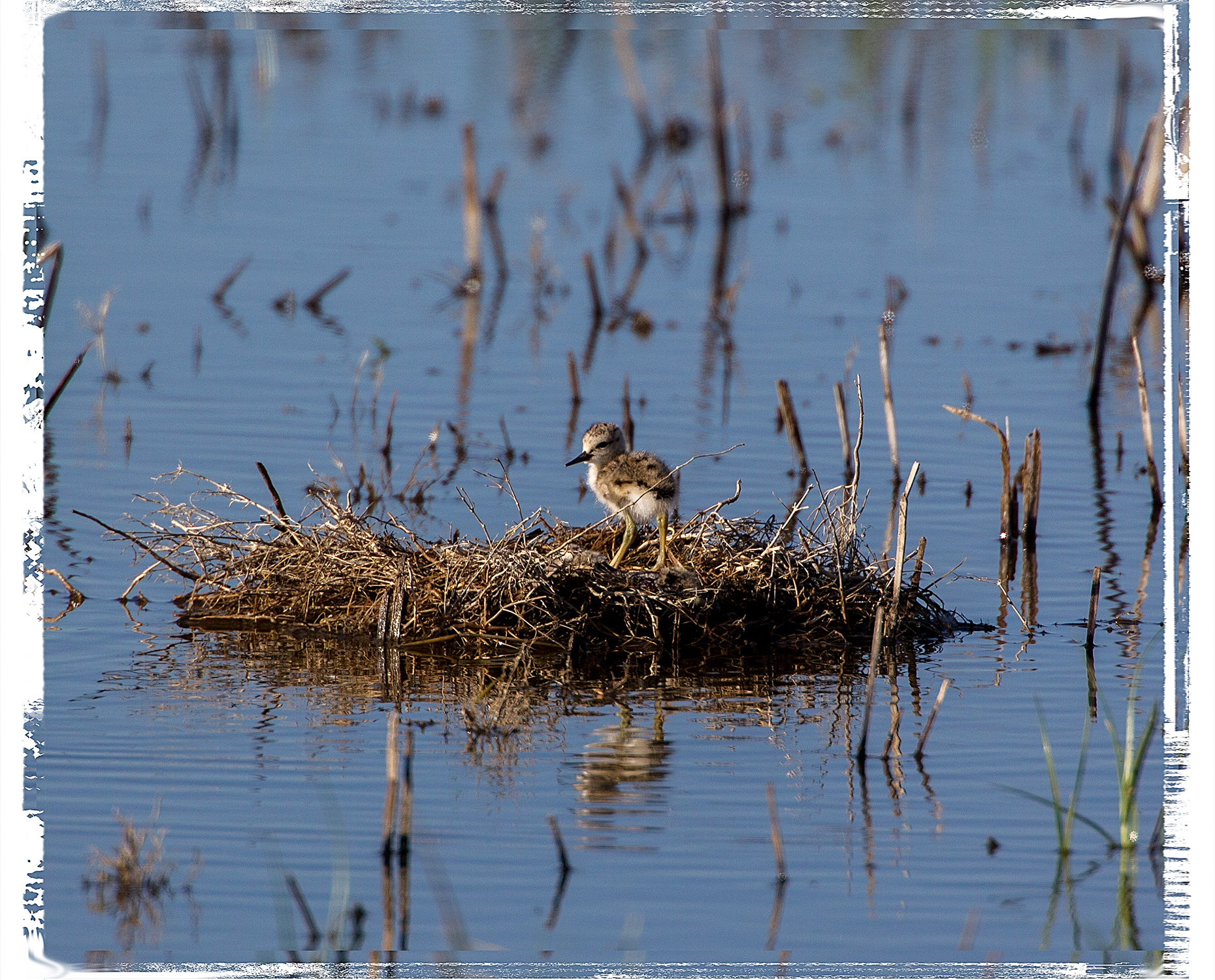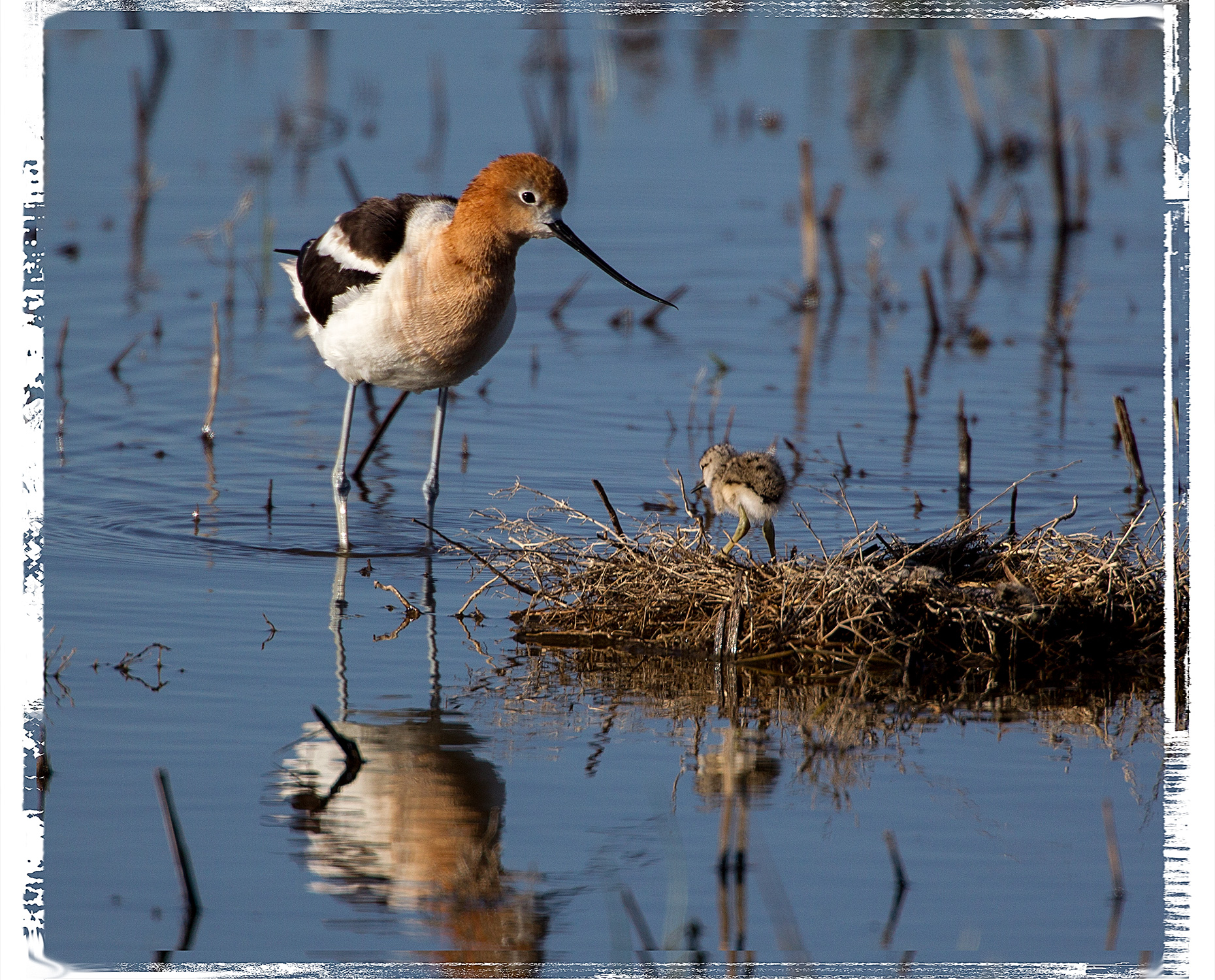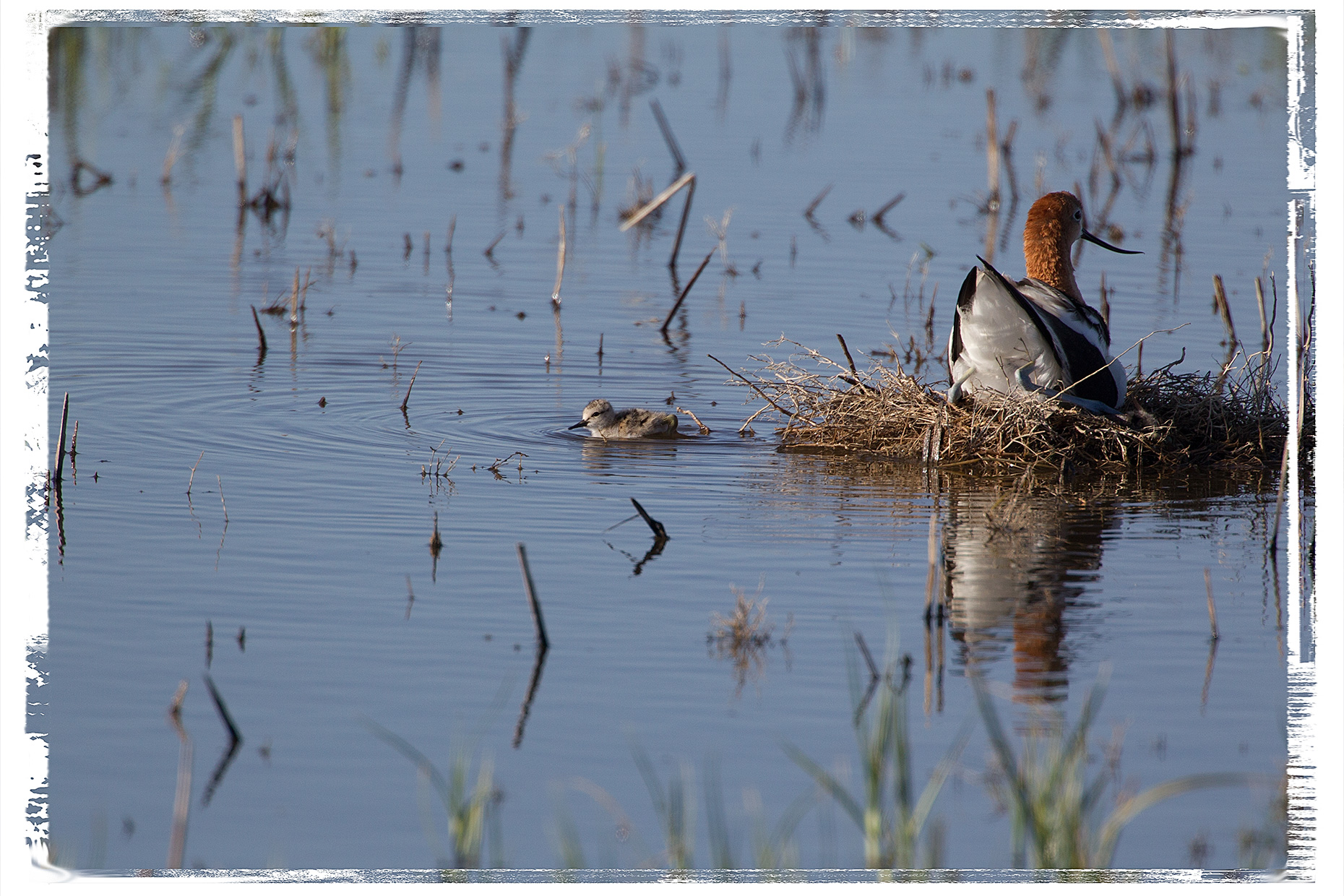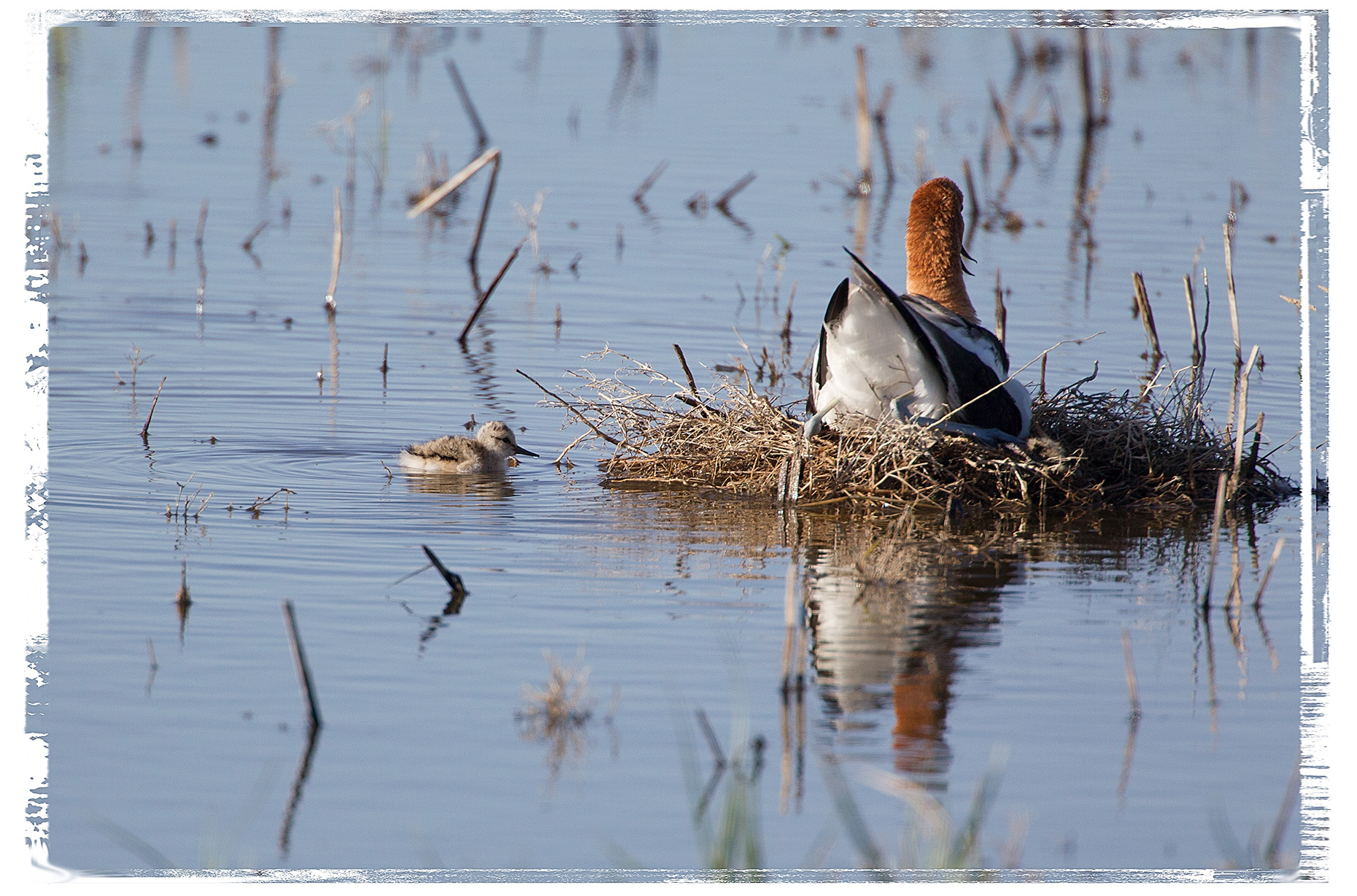When John sent me shots he had taken at Bear River two weeks after I had been there, I was immediately dissatisfied with the shots I had taken in May. John had gotten much closer than I had, and the light was better in his shots than in mine. If I had managed to get some shots of Avocet chicks on my first trip I might not have gone back, but knowing there were much better shots of Grebes and their chicks to be had made the trip a “no-brainer” for me.
Despite “focusing” on finding Avocet chicks on the trip, I ended up with more shots of Western and Clark’s Grebes’ chicks than I did of anything else. After this trip I might never need to take another shot of Grebe babies — though I doubt I will be able to resist the temptation.
Here are five of my favorite shots from this trip, beginning with this shot of proud parents paddling down the canal.

There were adorable Grebe chicks everywhere we looked
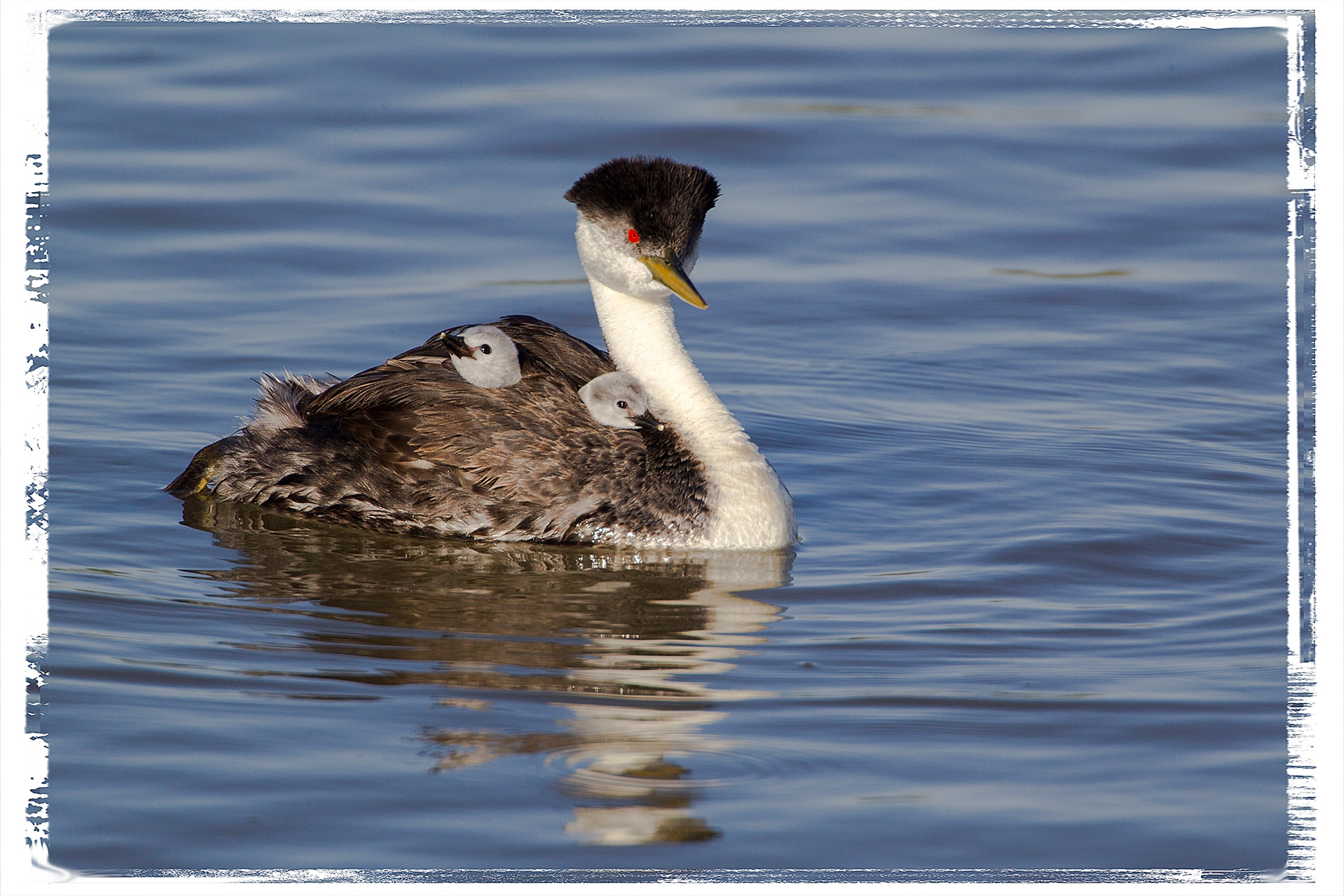
with parents attentive to their every need.
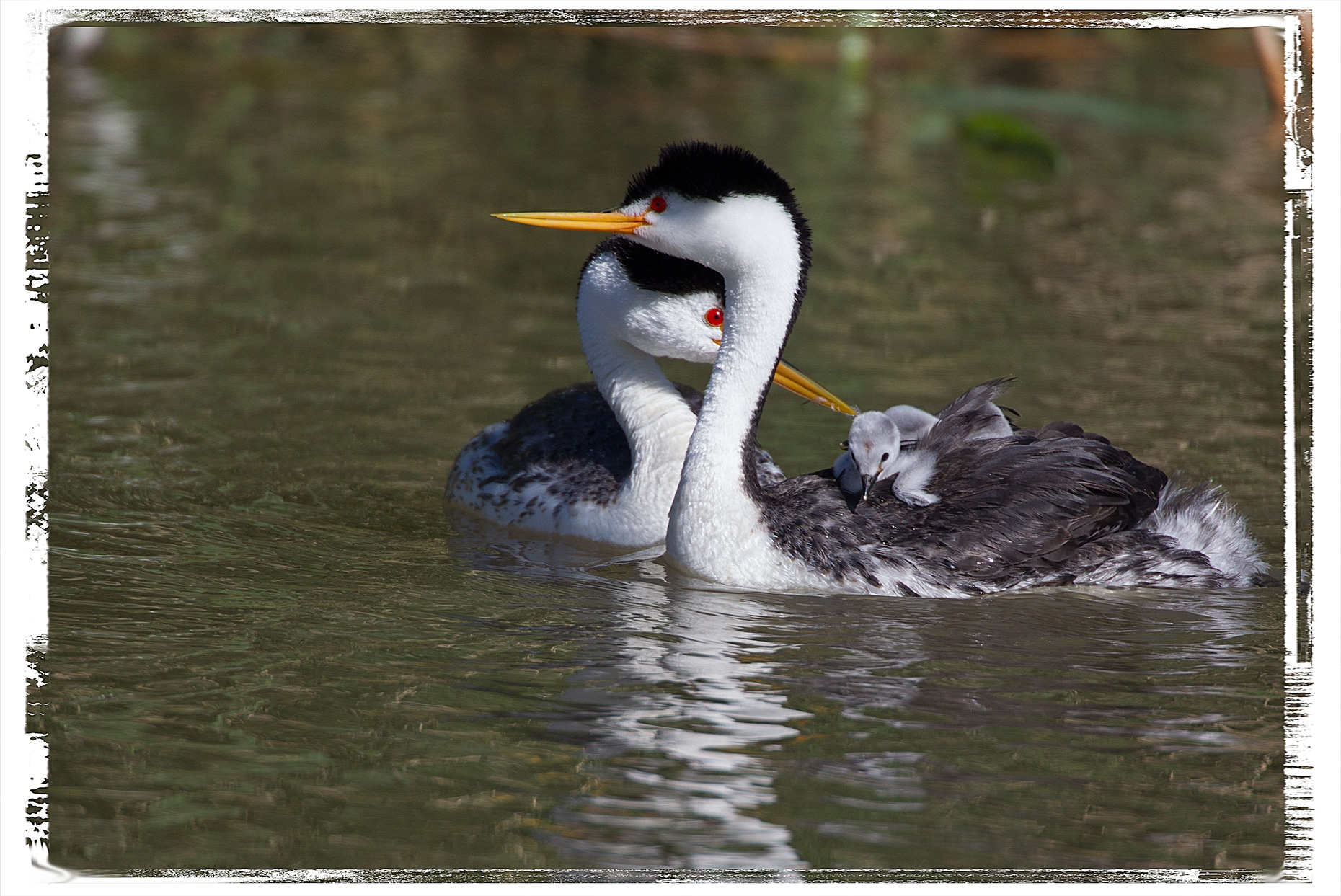
There were also a lot of older chicks learning to be independent,
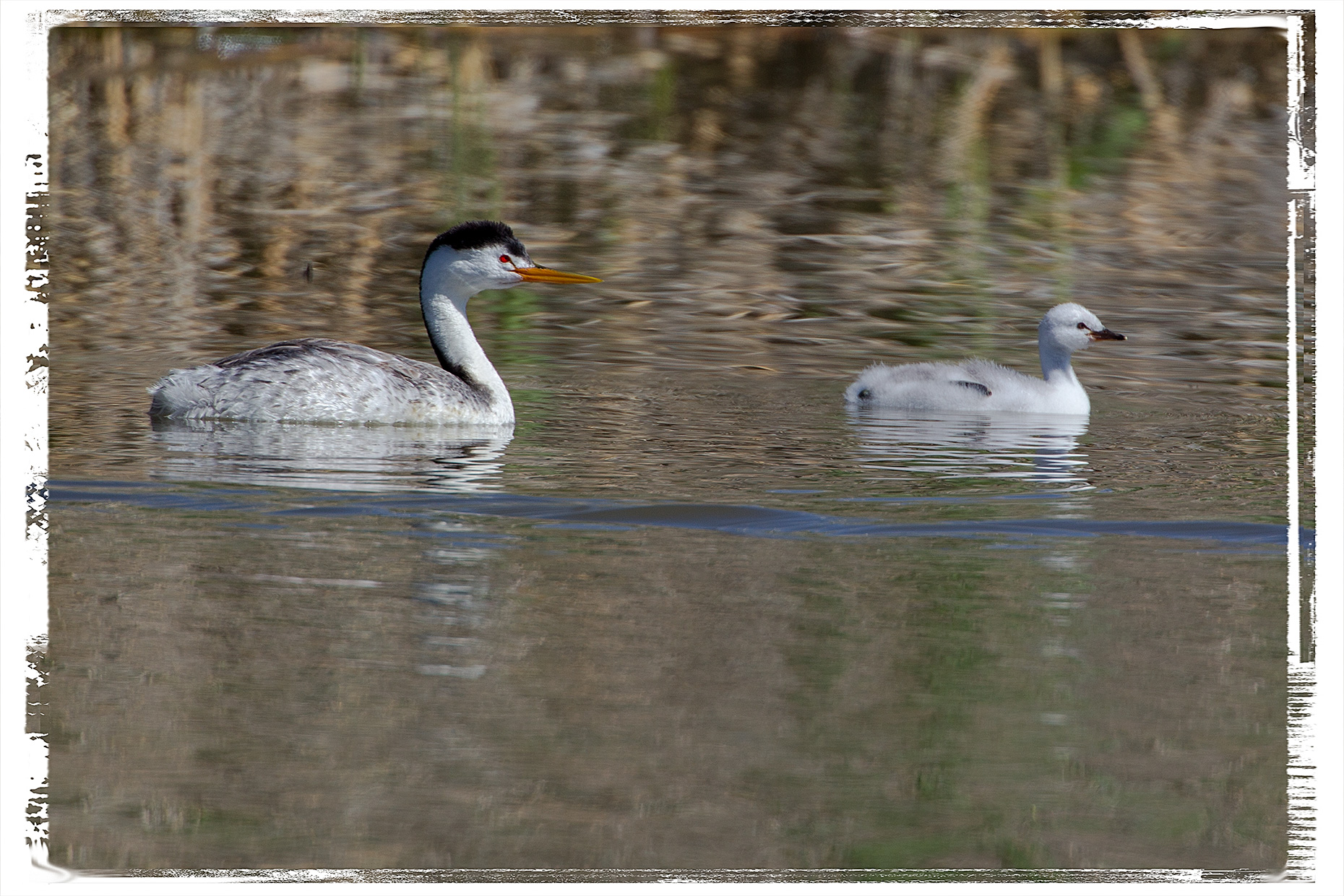
though some chicks the same size seemed much more demanding.
